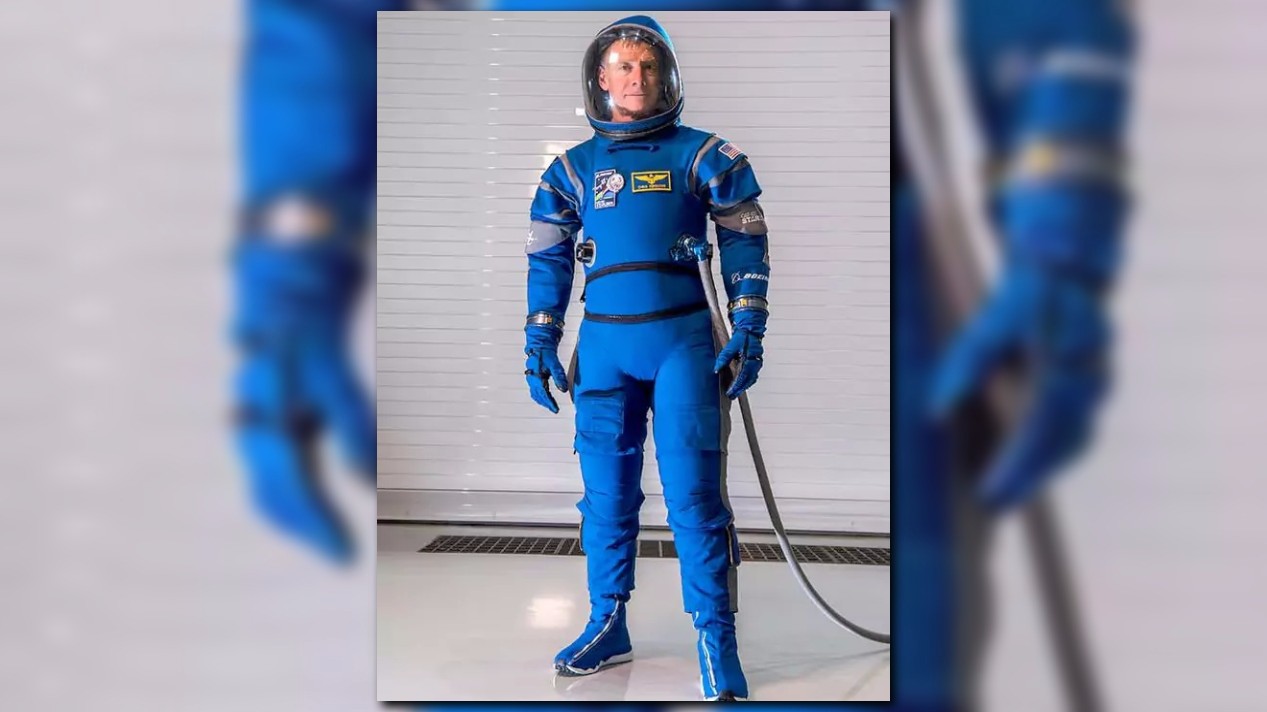Lightweight, breathable fabric. Slim gloves with fingers that can manipulate touch screens. Sneaker-like boots, and a hoodie for a helmet.
And plenty of Velcro.
Those are among the features of the spacesuit astronauts will wear aboard Boeing CST-100 Starliner capsules flying from Cape Canaveral to the International Space Station, possibly in the summer of 2018.
The company earlier this week unveiled a new launch-and-entry suit inside a former shuttle hangar at Kennedy Space Center, where Boeing will assemble and refurbish Starliners.
Compared to the bulky orange “pumpkin” suits worn by shuttle crews, the “Boeing blue” suits are lighter and more modern, said former astronaut Chris Ferguson, Boeing’s director of Starliner Crew and Mission Systems.
“We like to think this represents the future of what protective space gear will be,” Ferguson said during an event broadcast on Facebook Live on Wednesday.
Boeing’s suit, designed with the Massachusetts-based David Clark Co., weighs about 12 pounds, compared with 30 pounds for NASA’s orange suits formally called the Advanced Crew Escape Suit, or ACES.
Developed as part of NASA’s Commercial Crew Program, under which Boeing has a contract worth up to $4.2 billion, the suit is the first of several modern designs to be released.
SpaceX will have its own spacesuit for crews flying from Kennedy Space Center to the International Space Station in Dragon spacecraft, possibly as soon as May 2018. NASA is modifying the ACES suit for crews expected to fly in Orion deep space capsules in the early '20s.
Boeing’s suit includes boots that resemble running shoes, designed in collaboration with Reebok. White feet gradually bleed into blue pant legs that can be unzipped at the ankles.
Boxy gray pockets on the legs offer room to stow survival gear, pencils or tools. Velcro leg straps provide more places to secure gear that would otherwise float away in microgravity.
Blue gloves clipped to the arms are slim and flexible enough to allow crew members to operate tablets loaded with procedures and checklists.
In one fashion-forward flourish, blue and gray pleats line the upper arms and shoulders. Ferguson said the folds were mainly decorative, covering stitching that provides mobility when the suits are inflated.
Astronauts will wear headsets for protection and communications, similar to those worn on aircraft carrier decks. Over those will be pulled a soft, blue hood and clear polycarbonate visor, rather than a hard “bubble” helmet.
The hood’s front zips to the neck instead of a hard helmet fastening to a heavy metal ring. Interior flaps provide an airtight seal.
The “get us home suit,” as Ferguson called it, couldn't be used for a spacewalk. It's intended to provide air and cooling to keep astronauts safe during launch and landings back on land, and during emergencies, like if a micrometeoroid strike caused a loss of cabin pressure.
“Space is an unforgiving and hazardous environment,” Ferguson said. “What the spacesuit does is create an artificial environment for them to survive until they can get safely back to land.”
Boeing plans to test the Starliner's launch escape system next January in New Mexico. An orbital test flight without a crew could fly by June 2018, before a two-person crew of Boeing and NASA test pilots boards that August in their new blue flight suits.
Follow James Dean on Twitter: @flatoday_jdean


